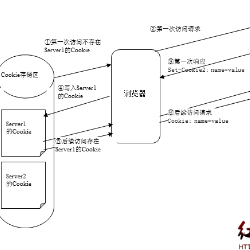As third-party cookie blocking is becoming the norm in browsers, advertisers and trackers have started to use first-party cookies for tracking. We conduct a differential measurement study on 10K websites with third-party cookies allowed and blocked. This study reveals that first-party cookies are used to store and exfiltrate identifiers to known trackers even when third-party cookies are blocked. As opposed to third-party cookie blocking, outright first-party cookie blocking is not practical because it would result in major functionality breakage. We propose CookieGraph, a machine learning-based approach that can accurately and robustly detect first-party tracking cookies. CookieGraph detects first-party tracking cookies with 90.20% accuracy, outperforming the state-of-the-art CookieBlock approach by 17.75%. We show that CookieGraph is fully robust against cookie name manipulation while CookieBlock's acuracy drops by 15.68%. While blocking all first-party cookies results in major breakage on 32% of the sites with SSO logins, and CookieBlock reduces it to 10%, we show that CookieGraph does not cause any major breakage on these sites. Our deployment of CookieGraph shows that first-party tracking cookies are used on 93.43% of the 10K websites. We also find that first-party tracking cookies are set by fingerprinting scripts. The most prevalent first-party tracking cookies are set by major advertising entities such as Google, Facebook, and TikTok.
翻译:随着第三方饼干封锁正在成为浏览器的常规,广告商和跟踪者已开始使用第一党饼干进行跟踪。我们在10K网站进行差异计量研究,允许和封锁第三方饼干。本研究显示,即使第三方饼干被封锁,第一党饼干也被用于存储和将识别信息解密给已知的跟踪者。相对于第三方饼干封存,彻底的第一党饼干封存并不切实际,因为它将导致功能重大断裂。我们提议了Cookie Graph,这是一种机器学习方法,可以准确和有力地检测第一党跟踪饼干。Cookie Graph用90.20 % 准确度检测第一党跟踪饼干,比最新的CookieBlock方法多17.75%。我们显示,CookieGraph 完全反对饼干操纵,而CookieBlock的缩略图则下降了15.68%。我们虽然将所有第一党的Facebook网站的32%和CookieBlock降低到10 %,但我们显示,CookieGraph公司最常用的轨道是10号。



